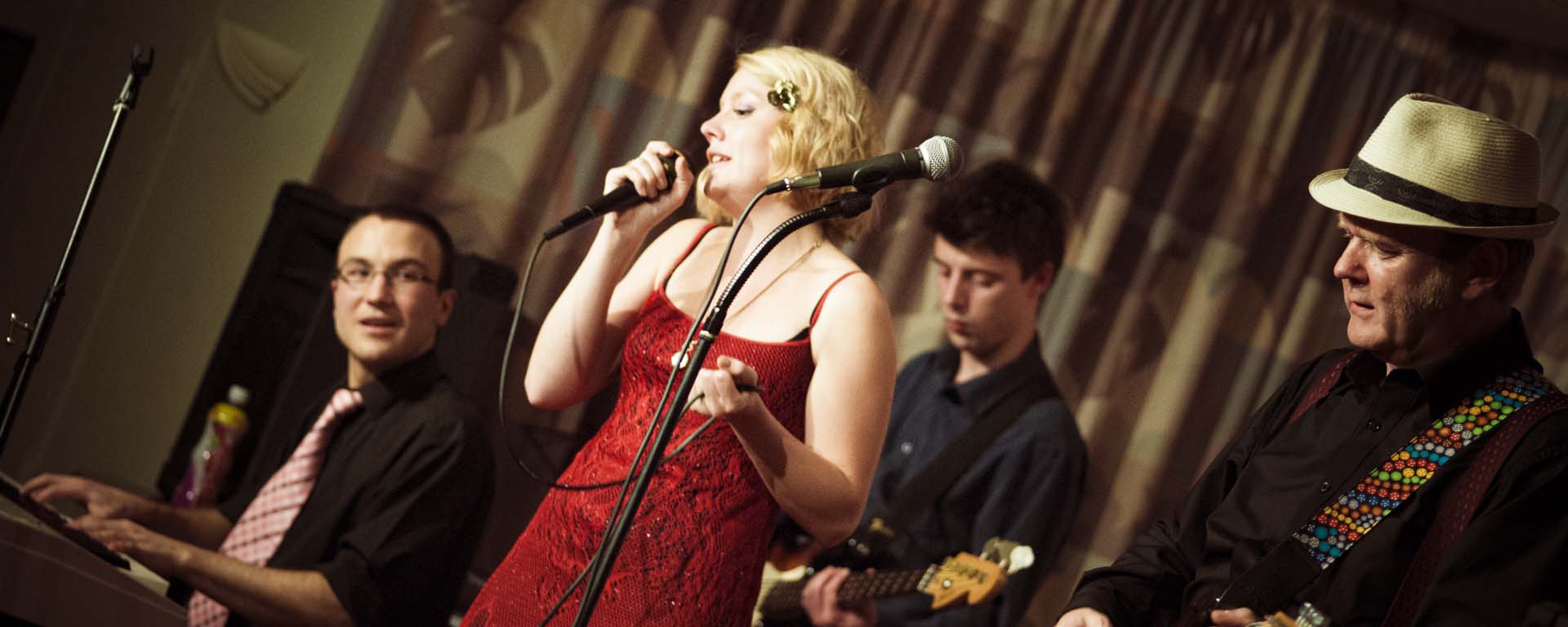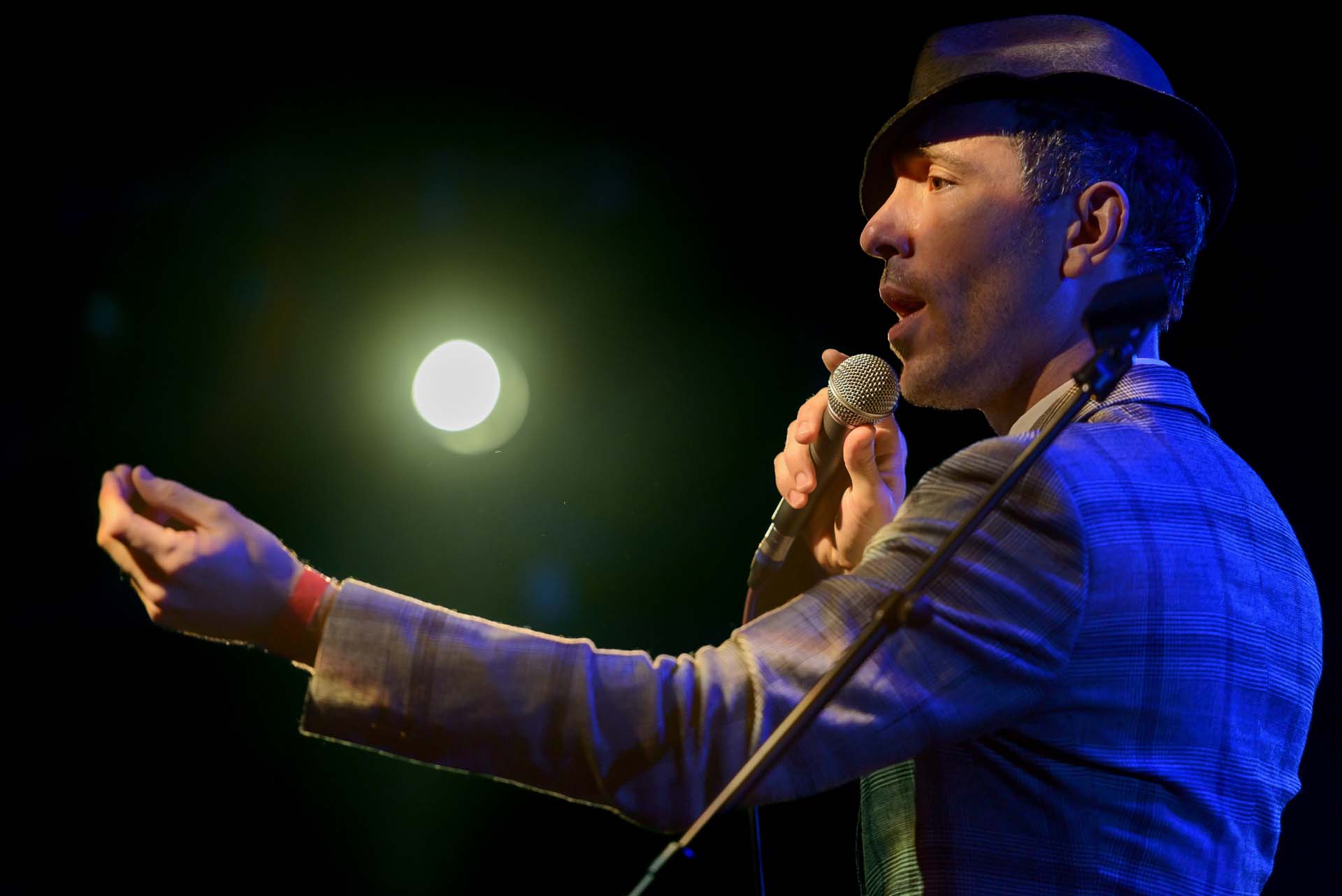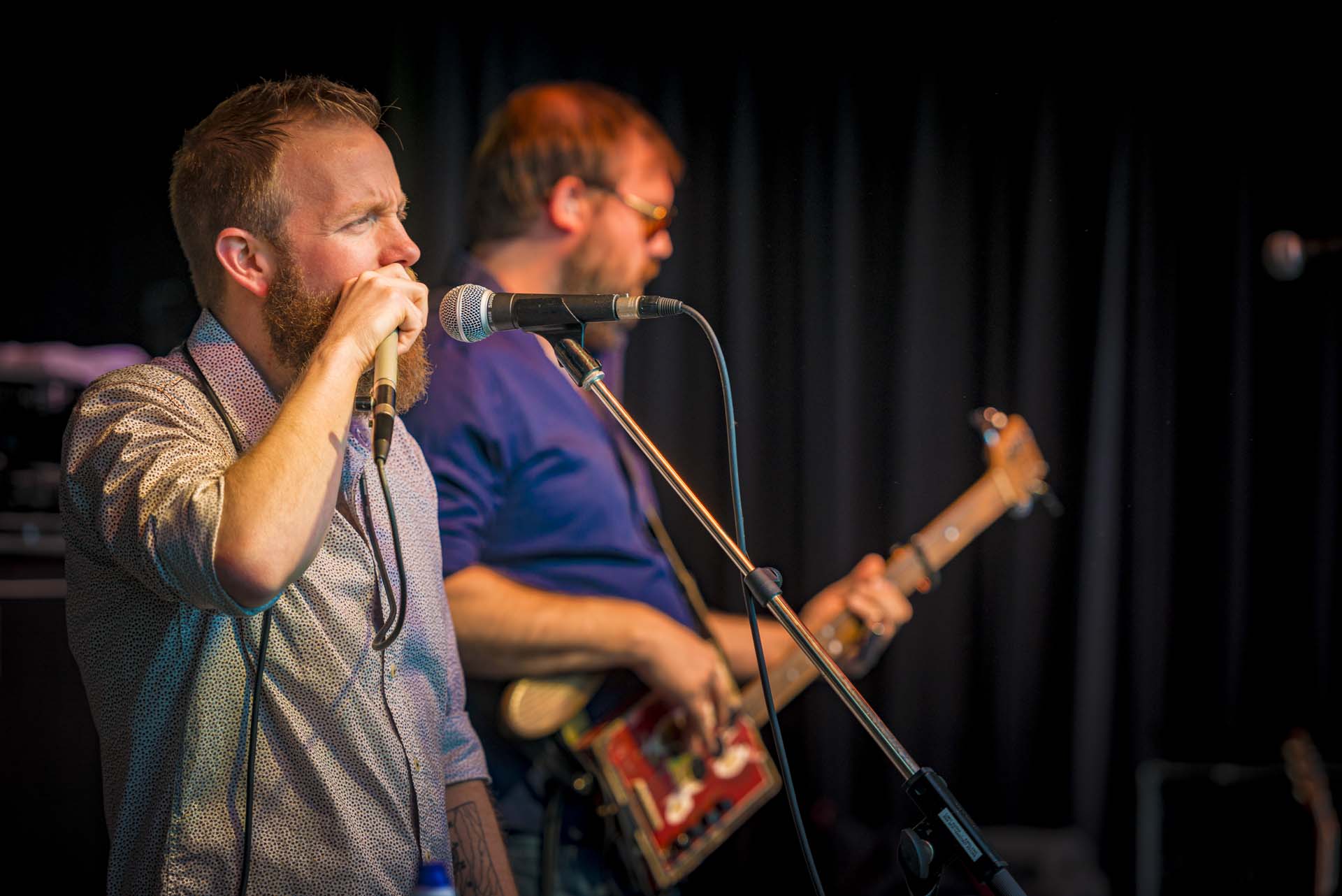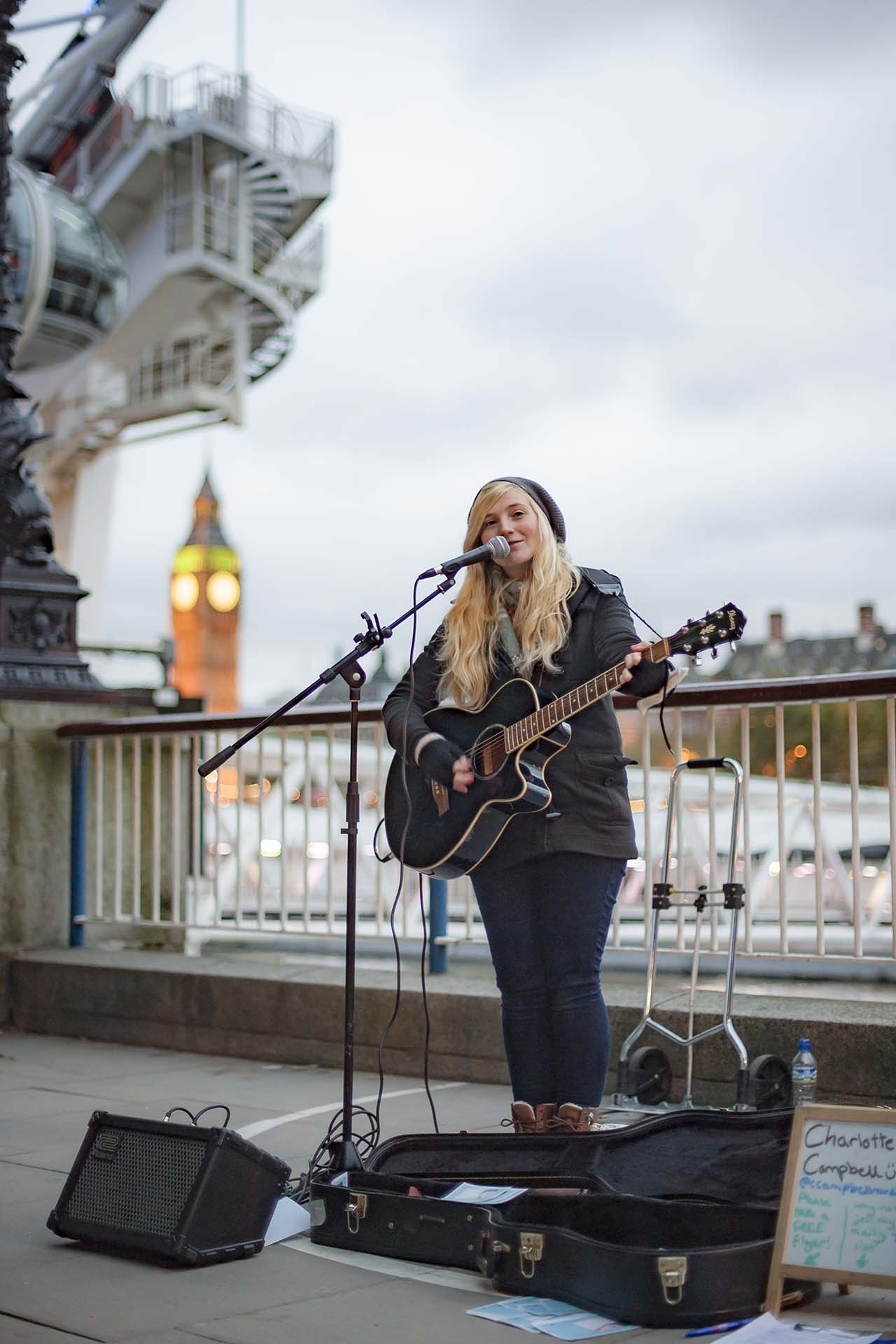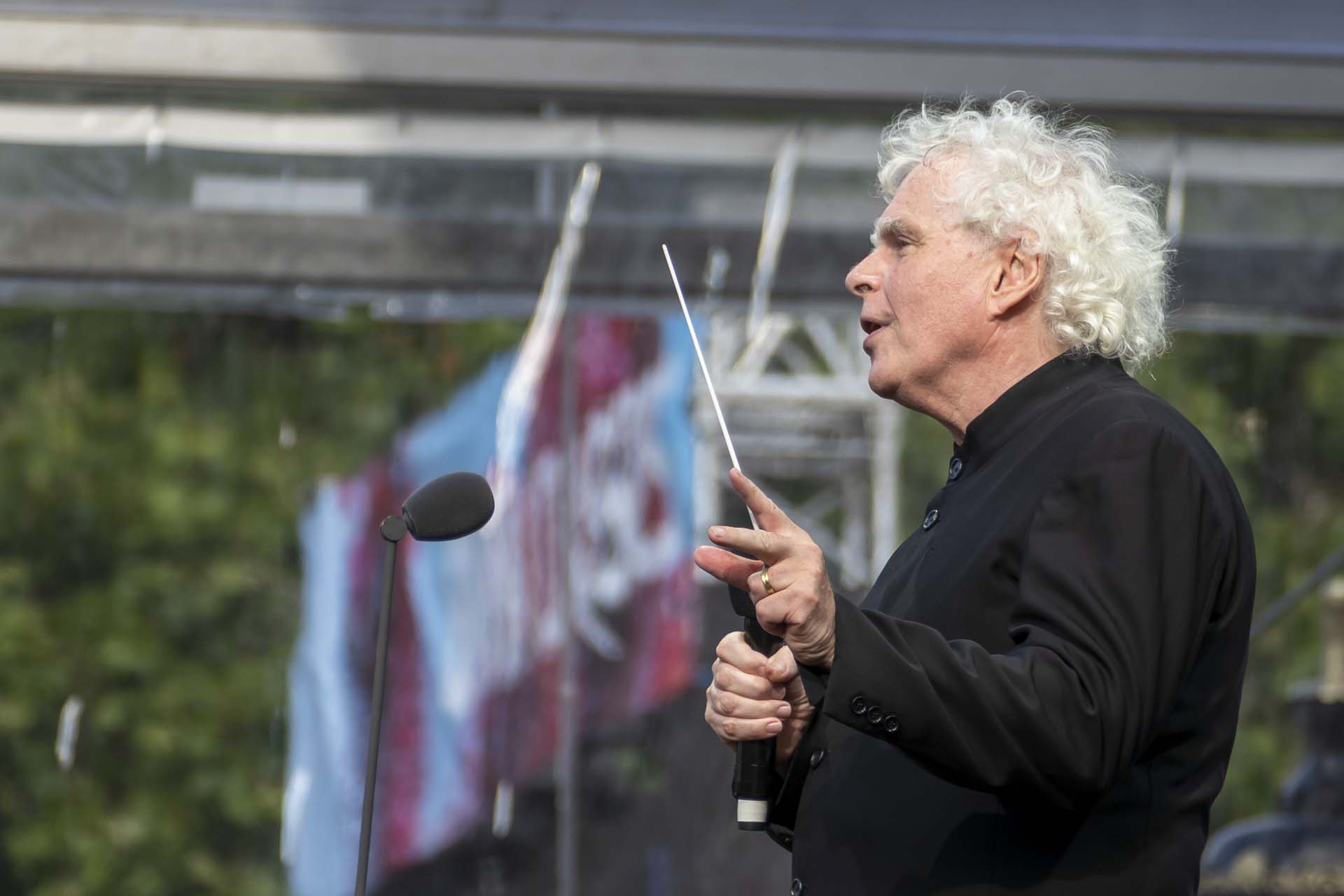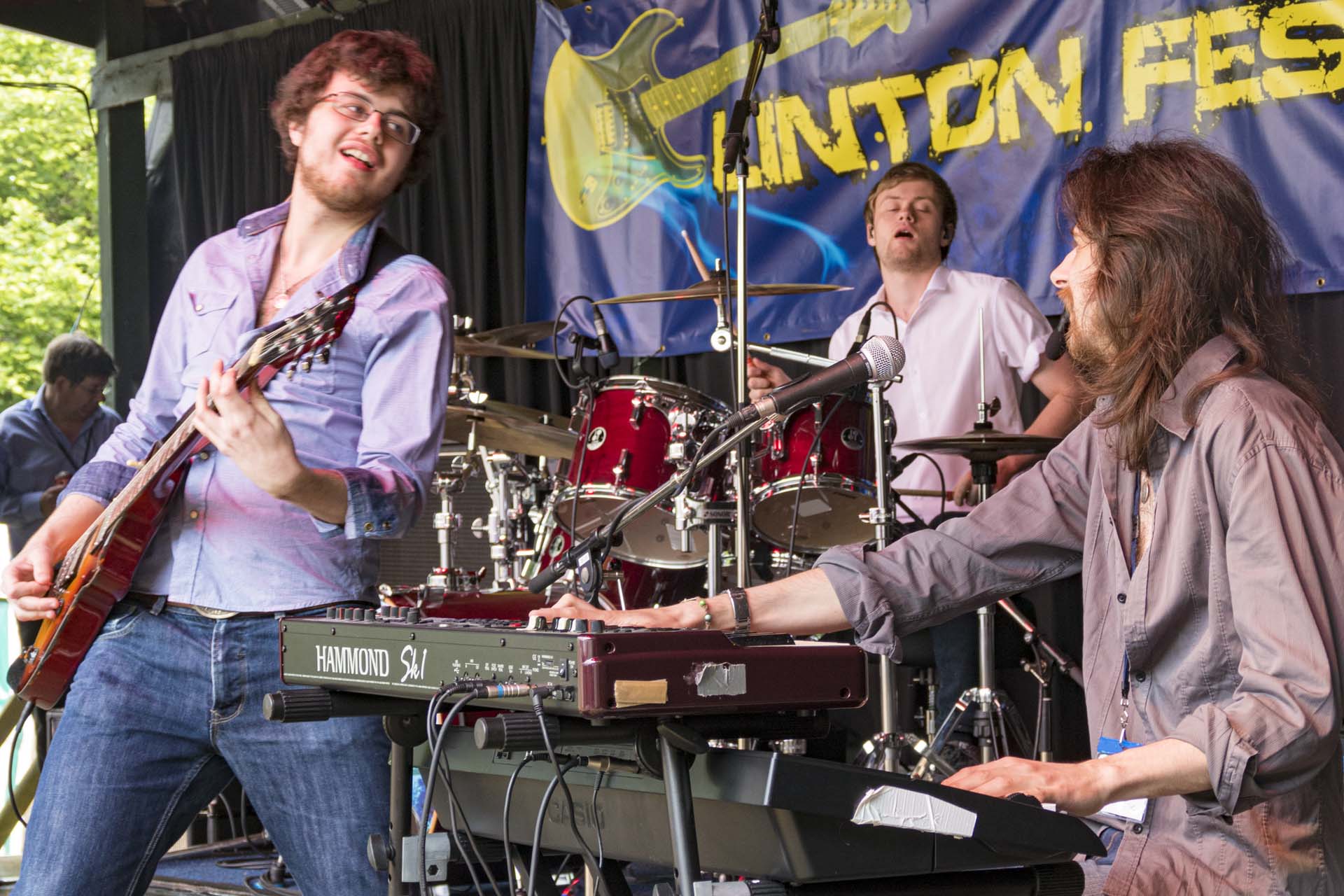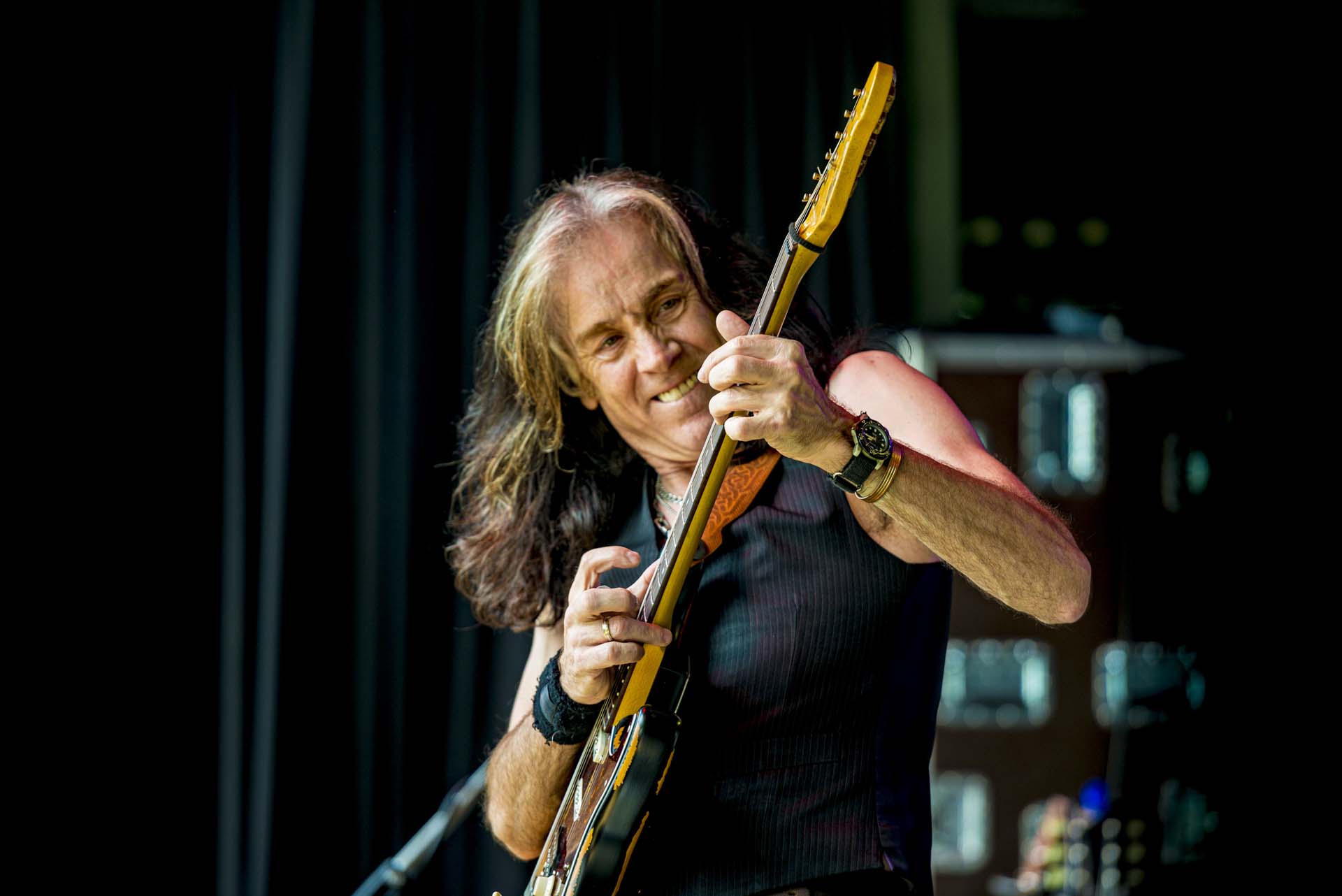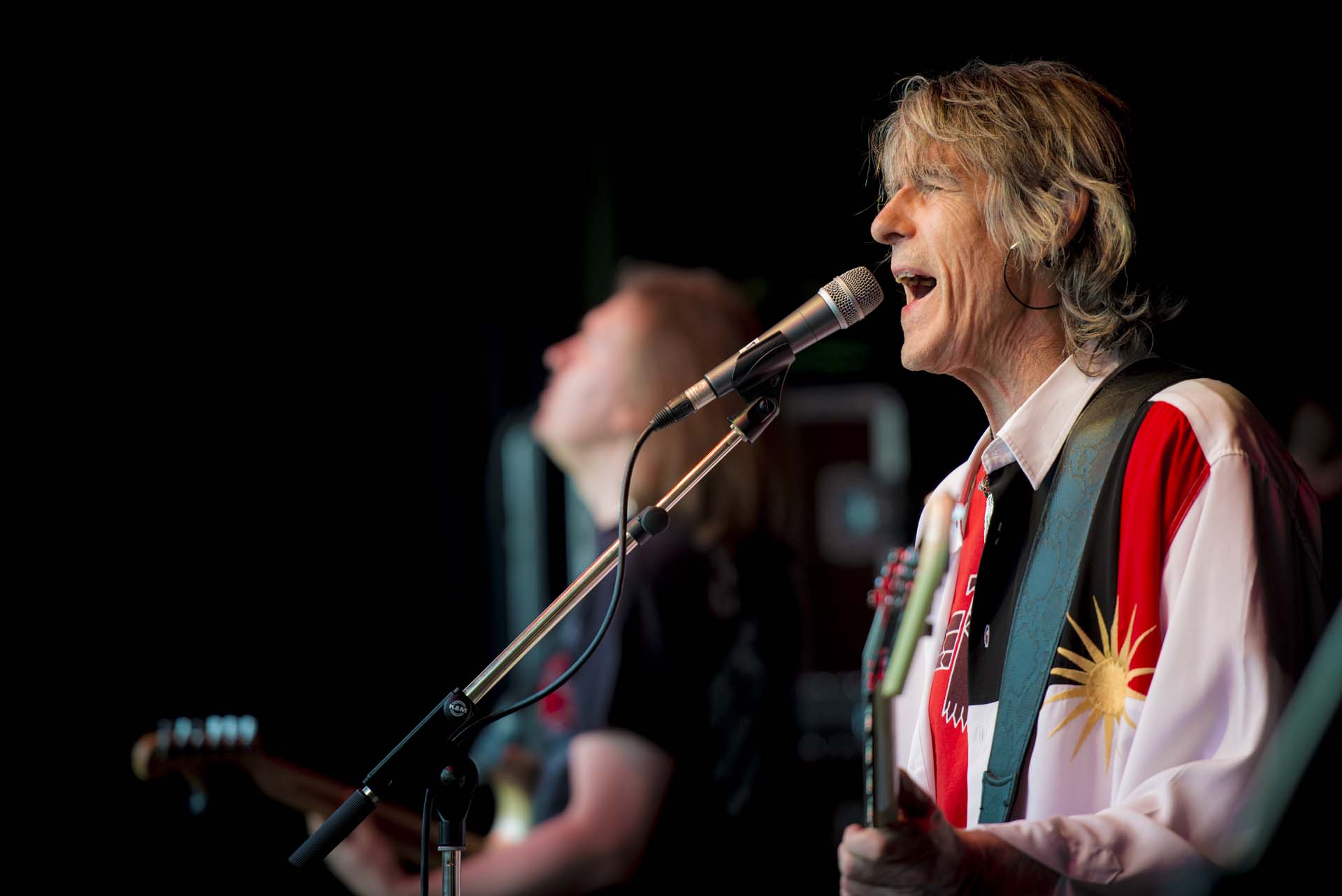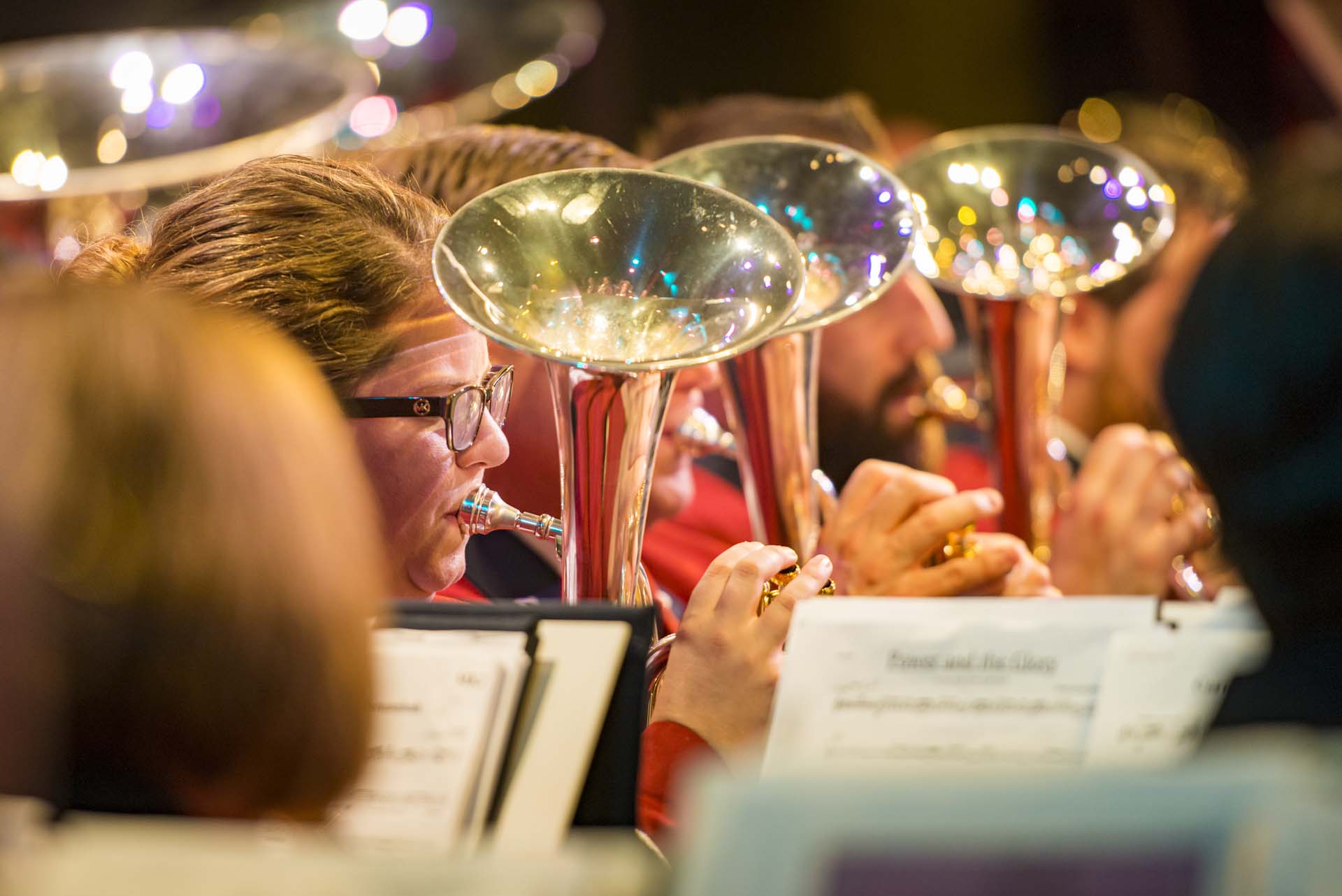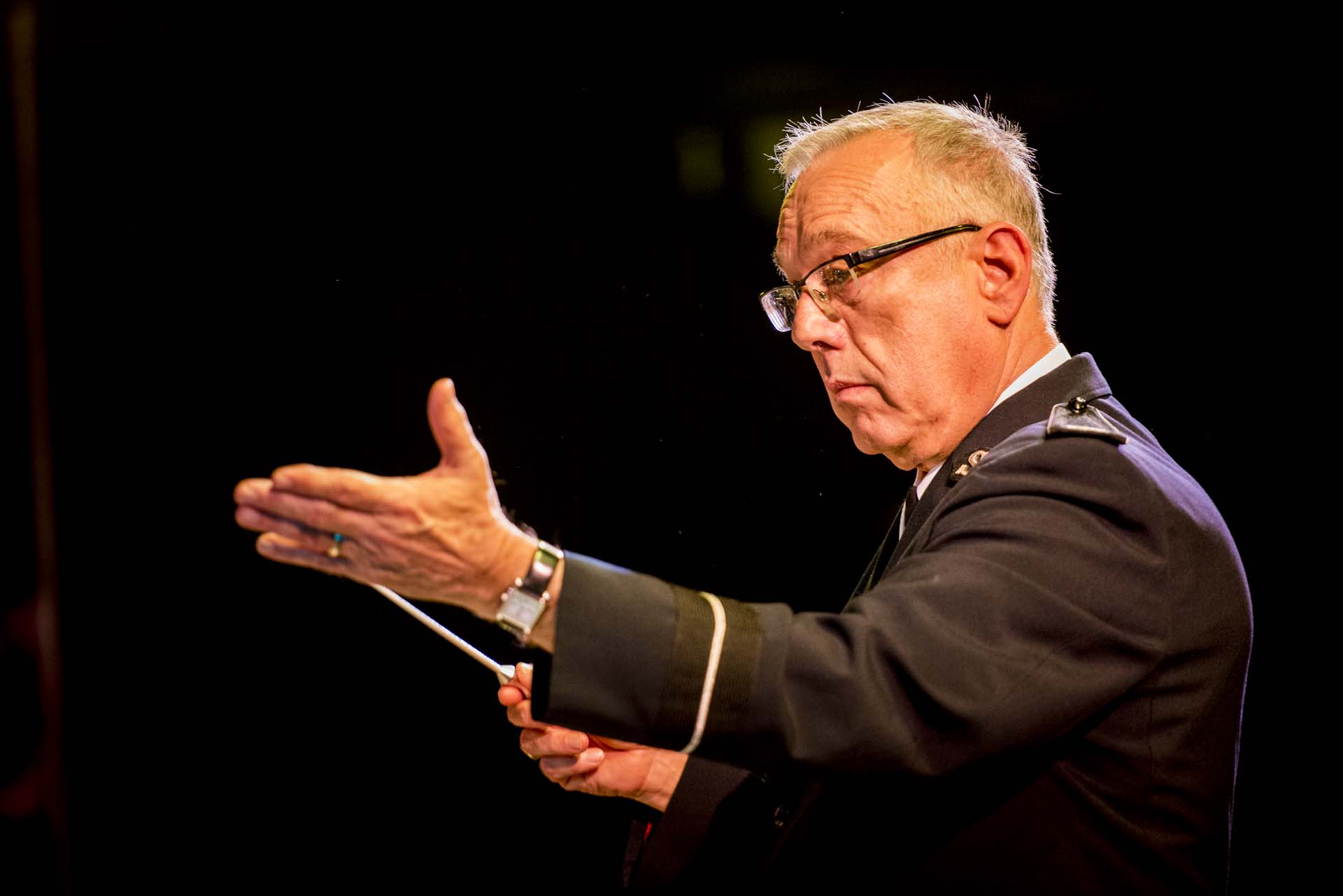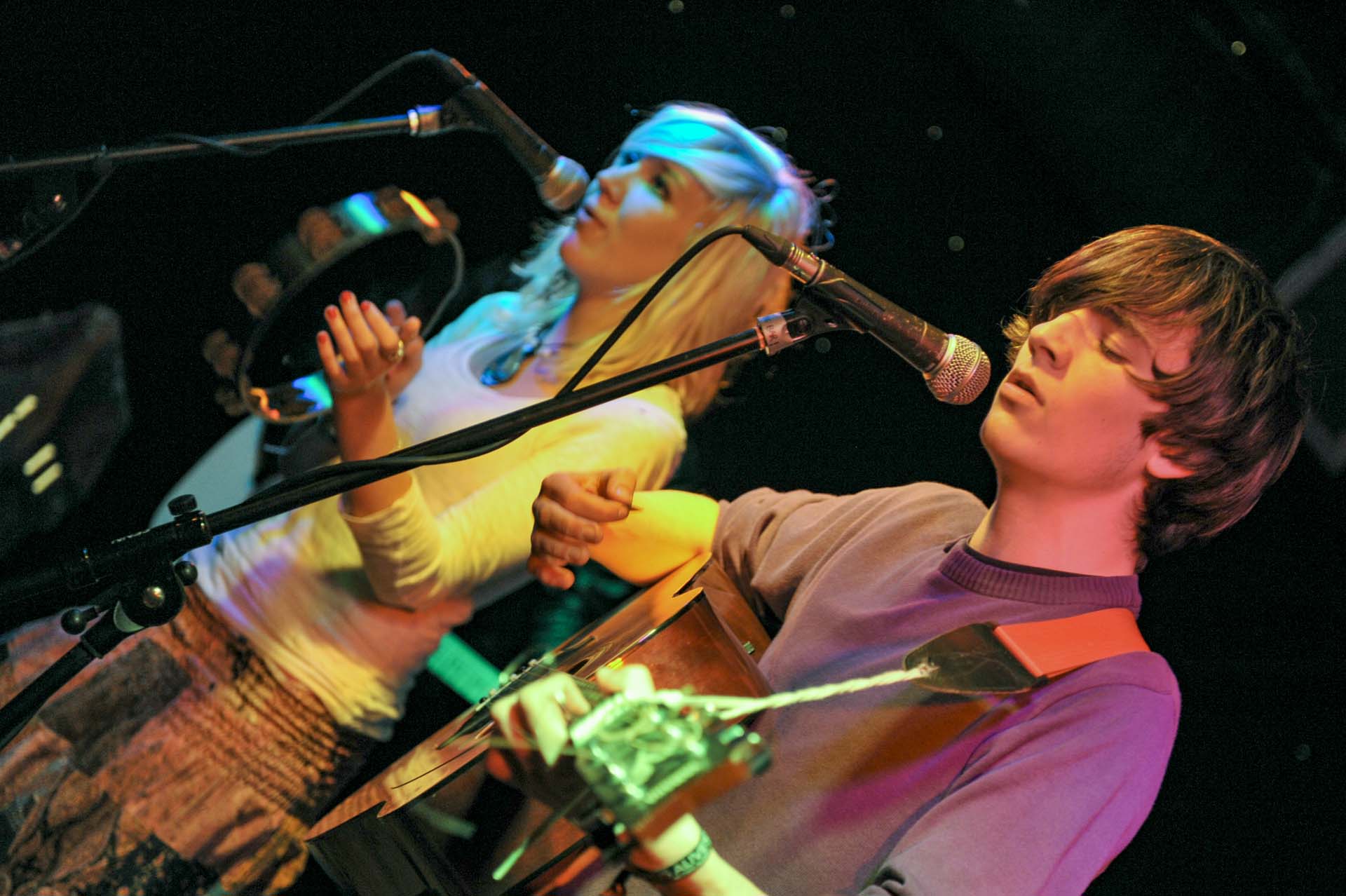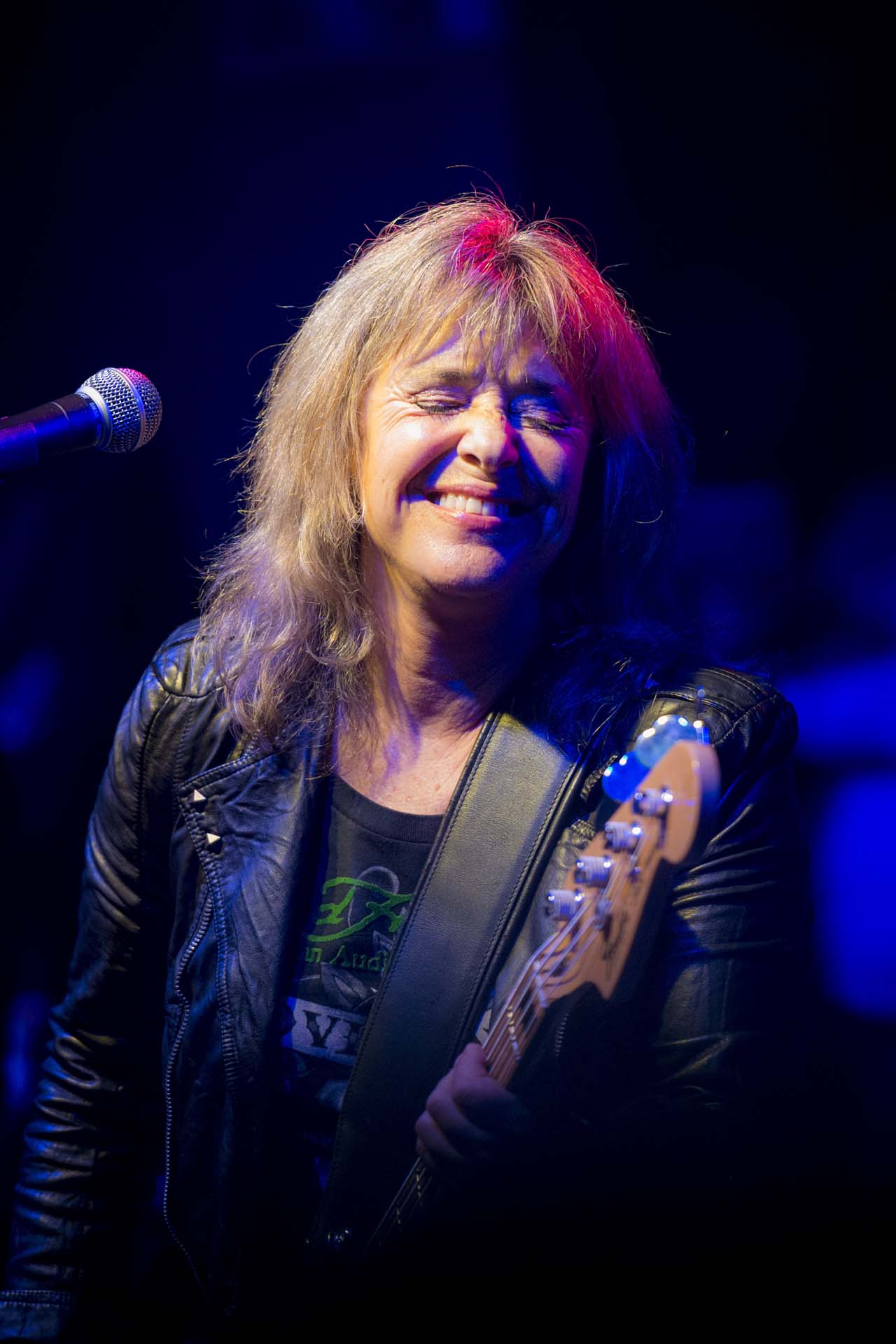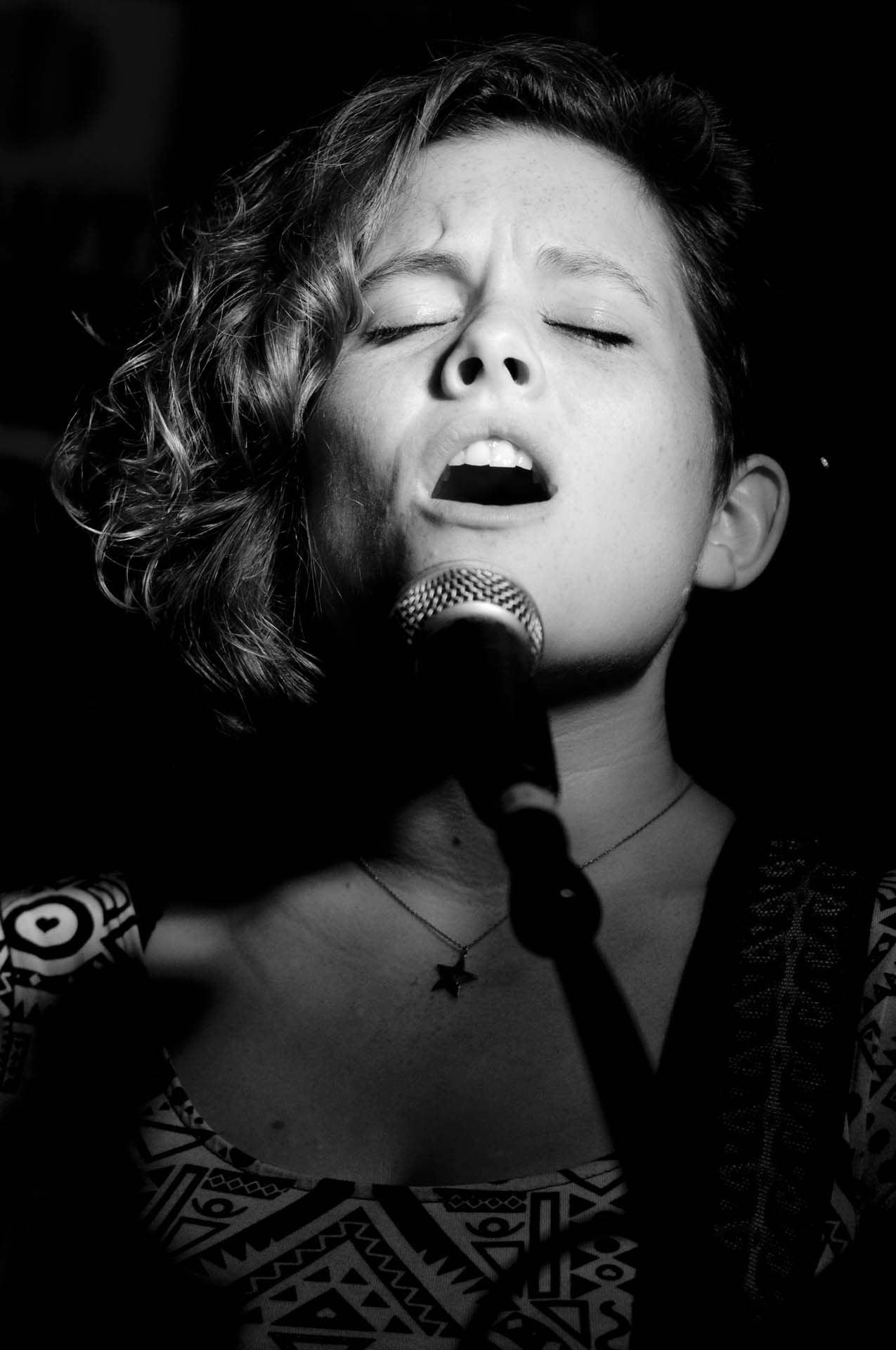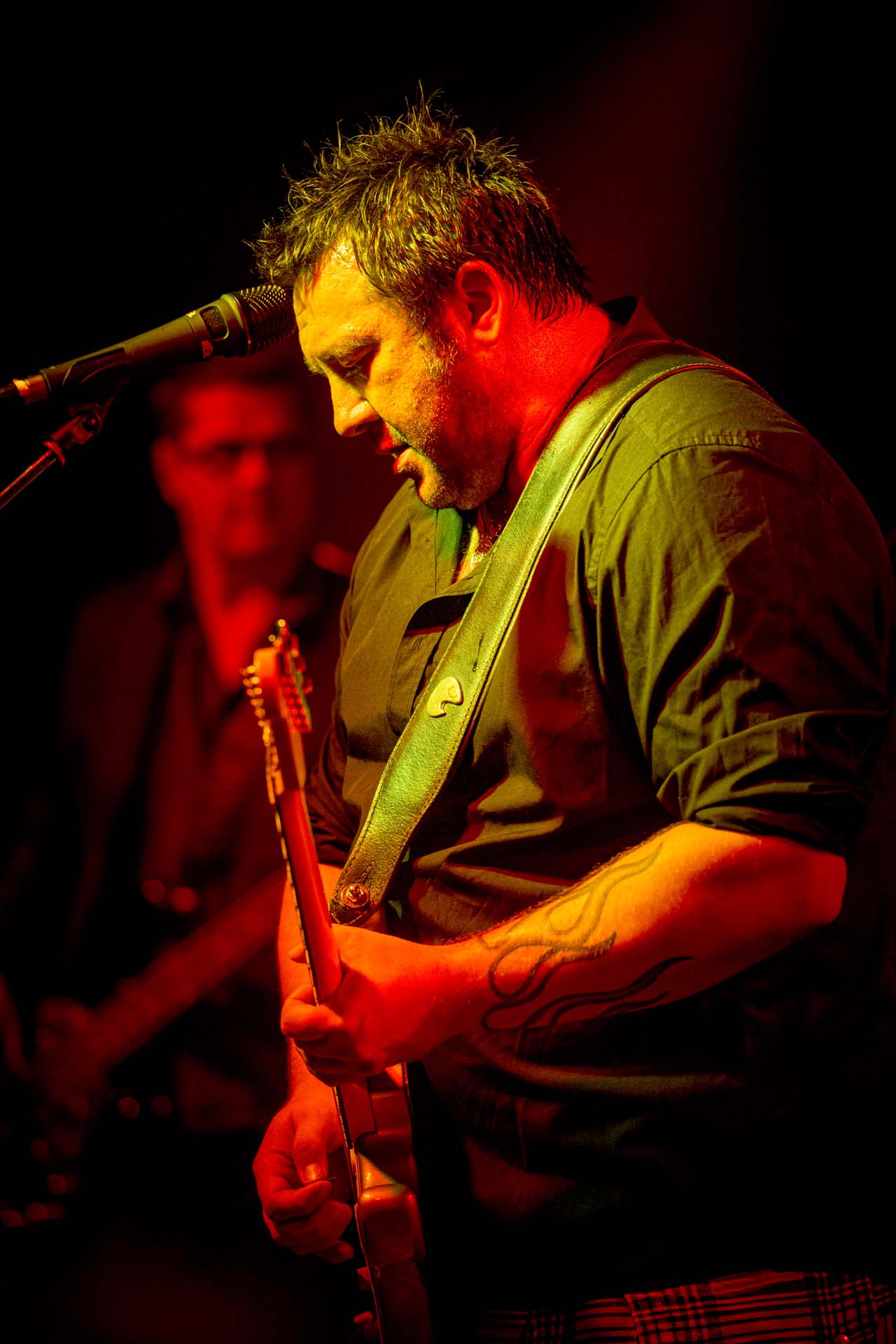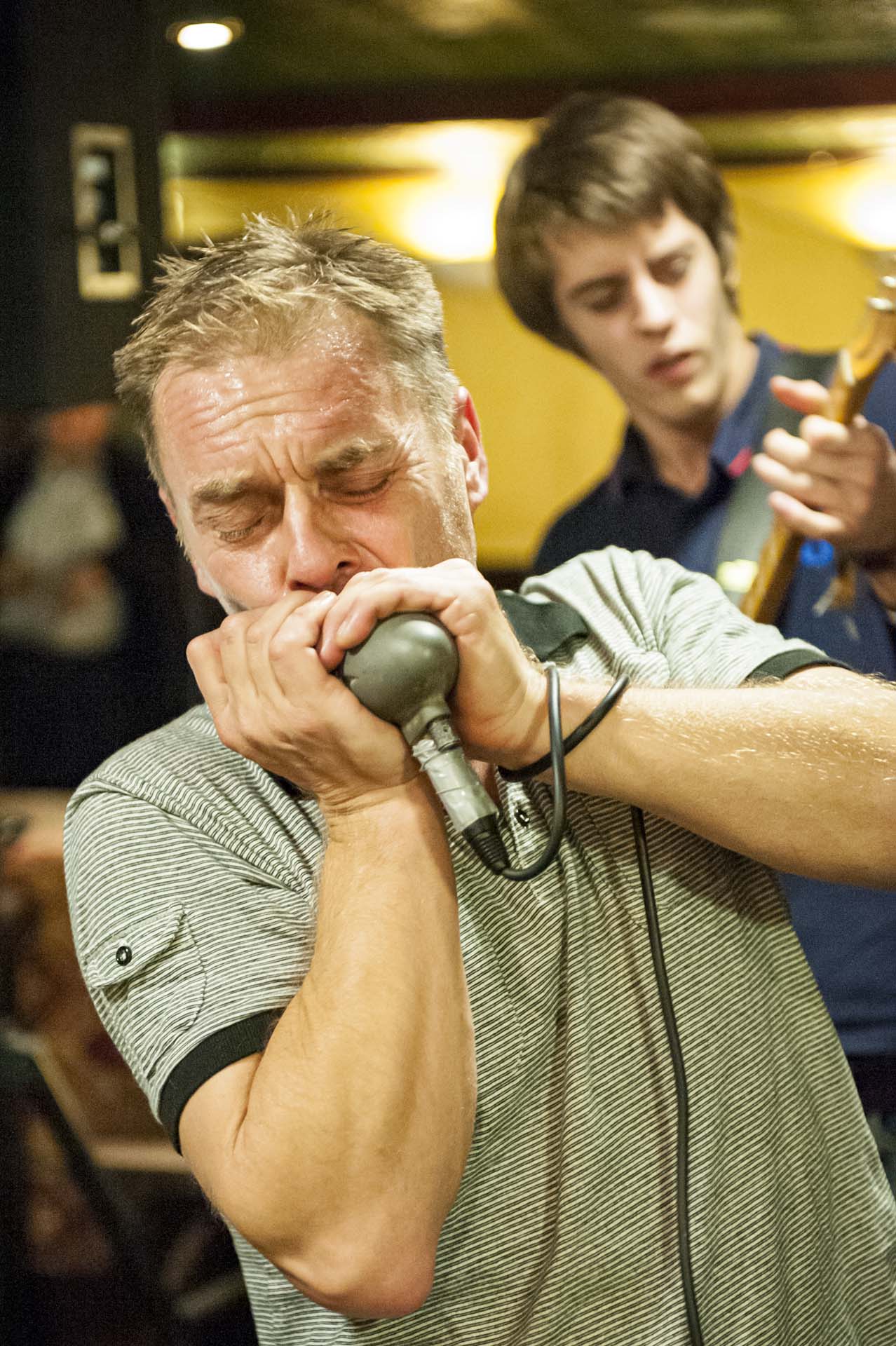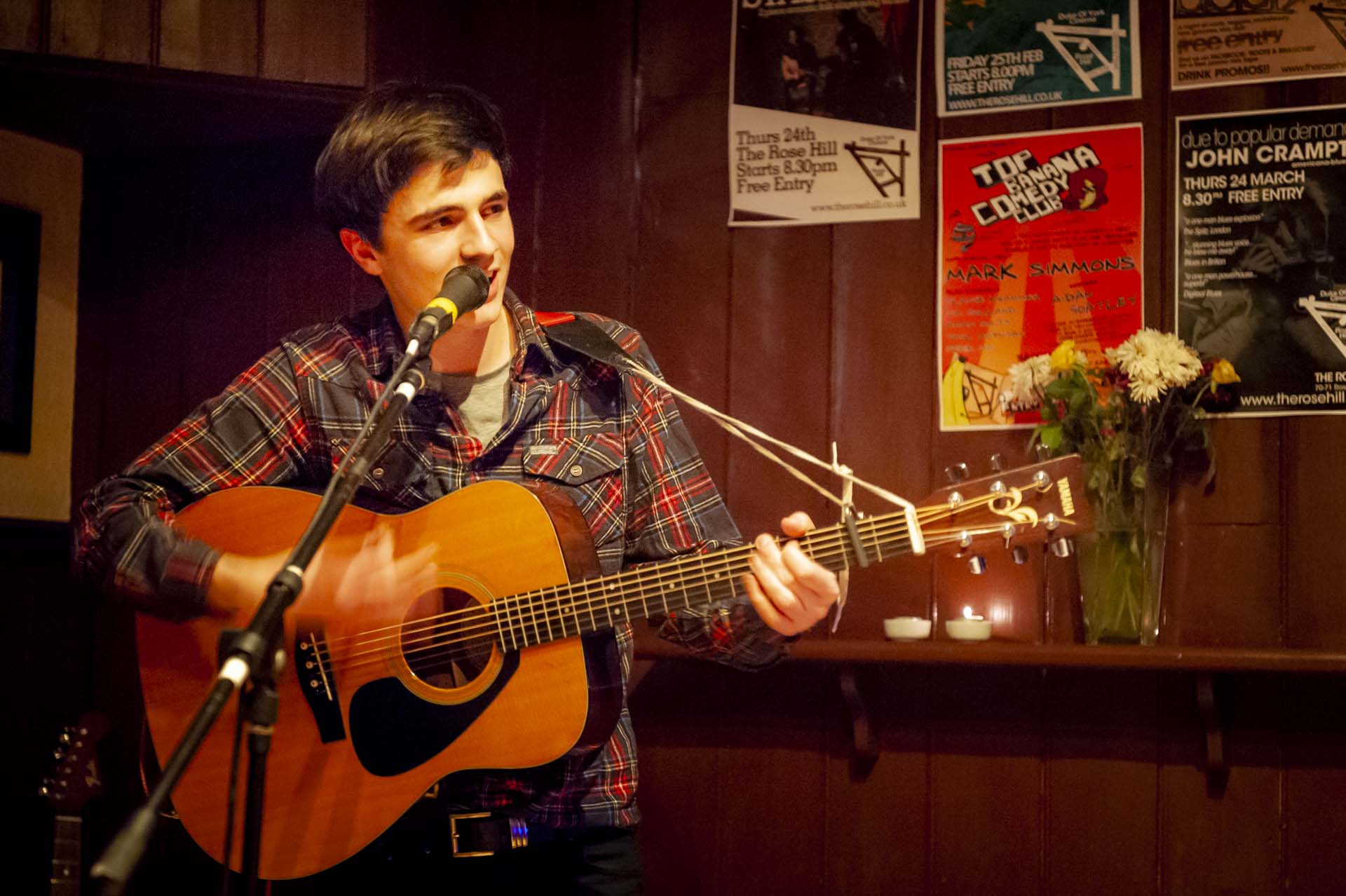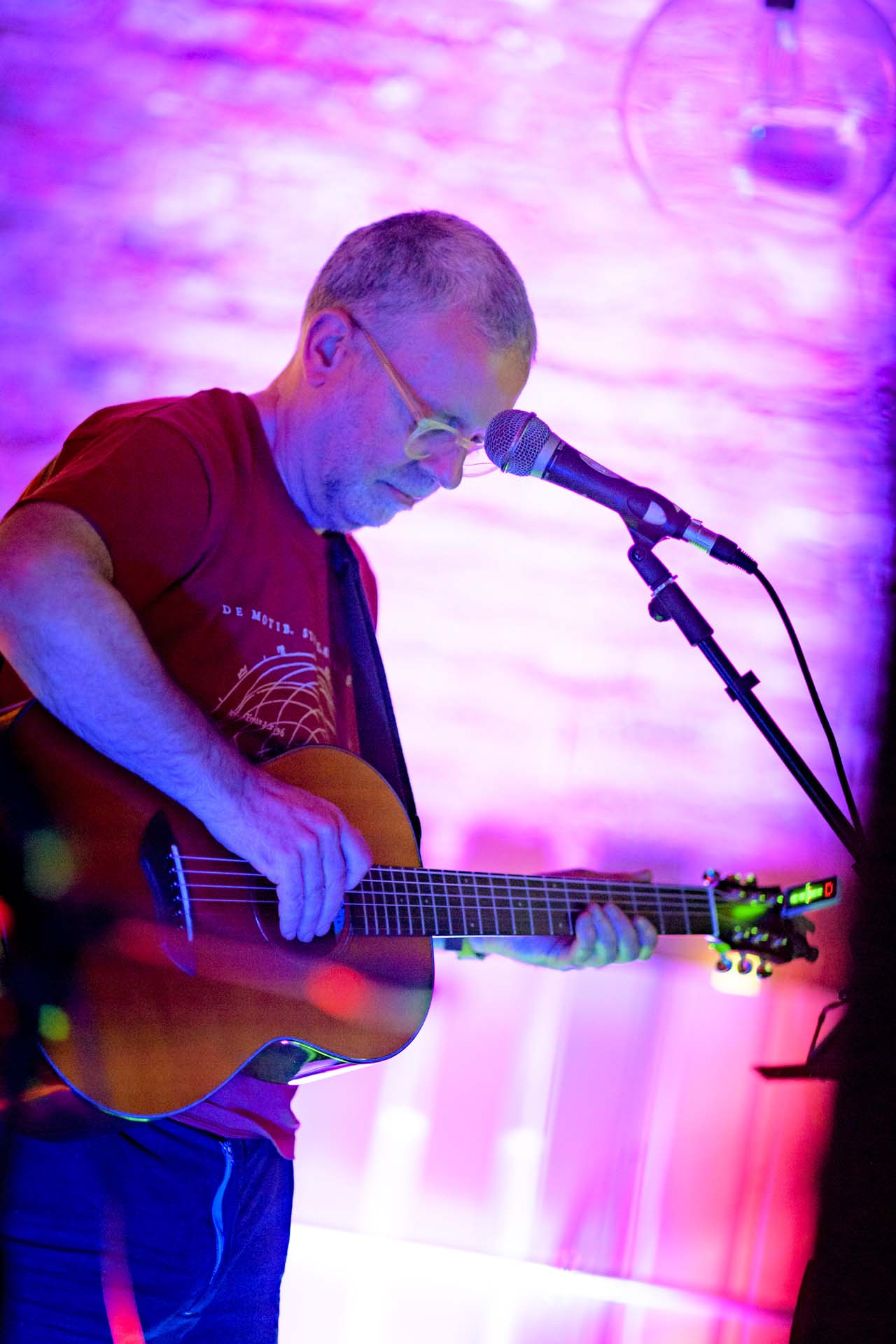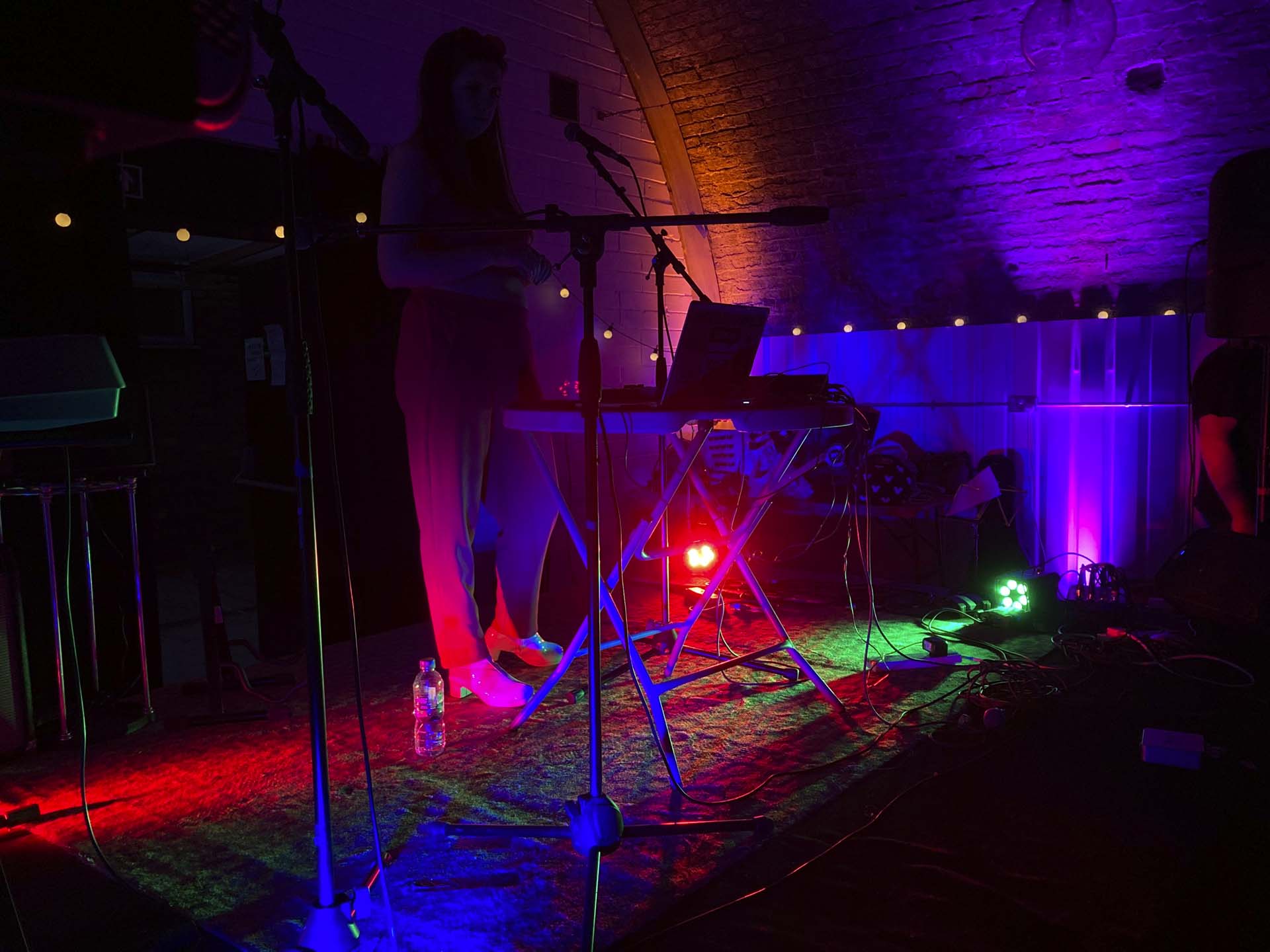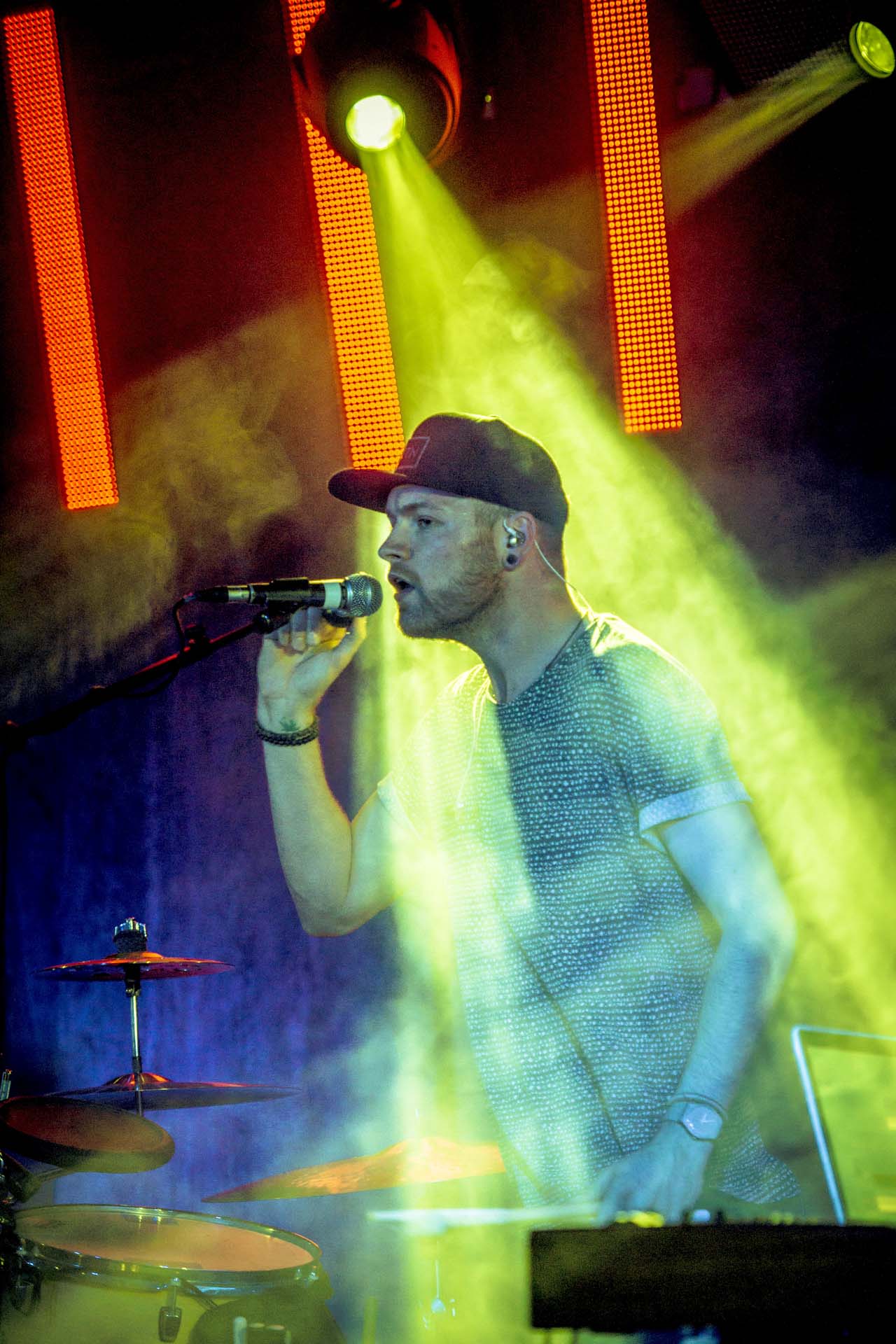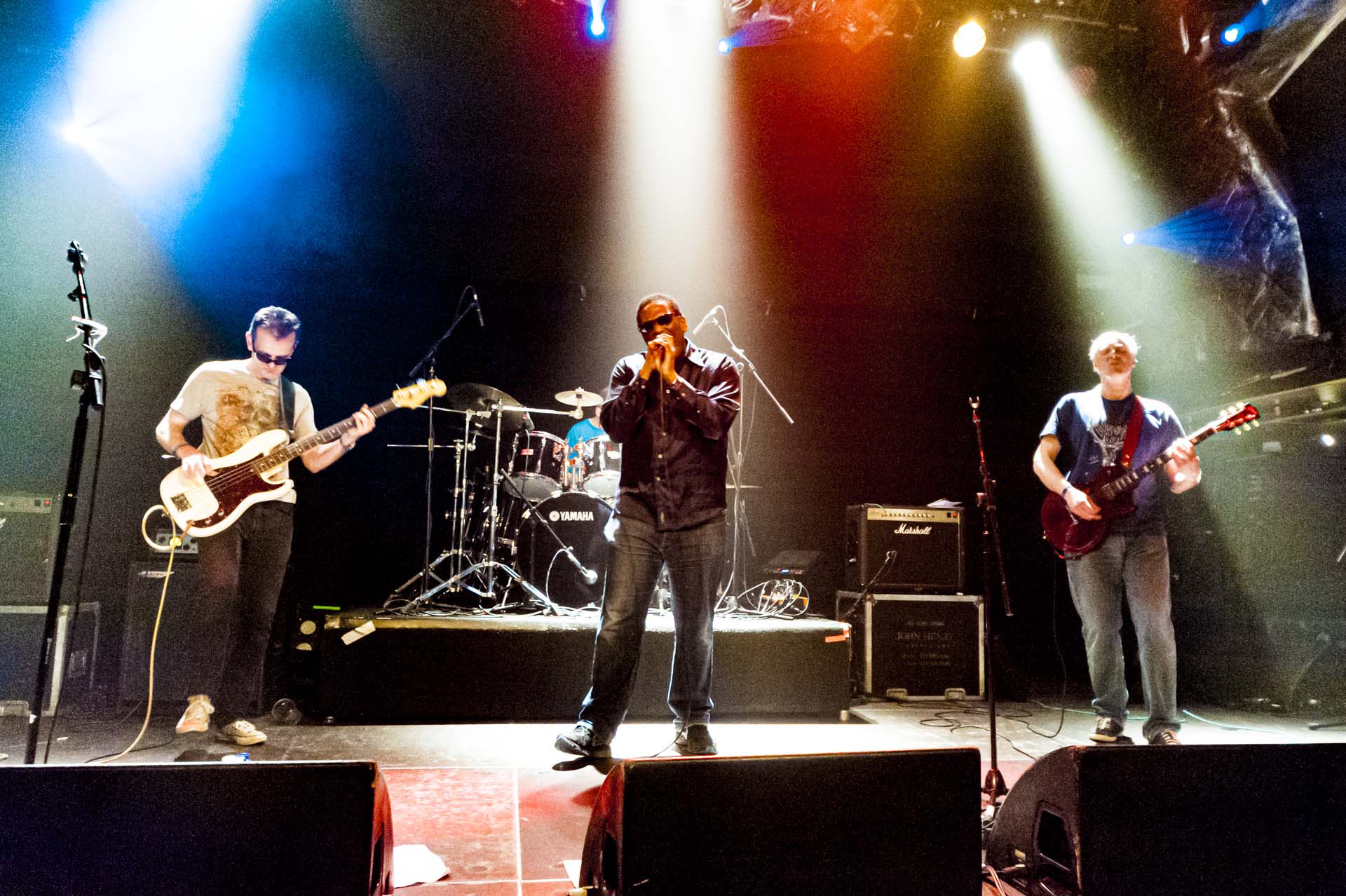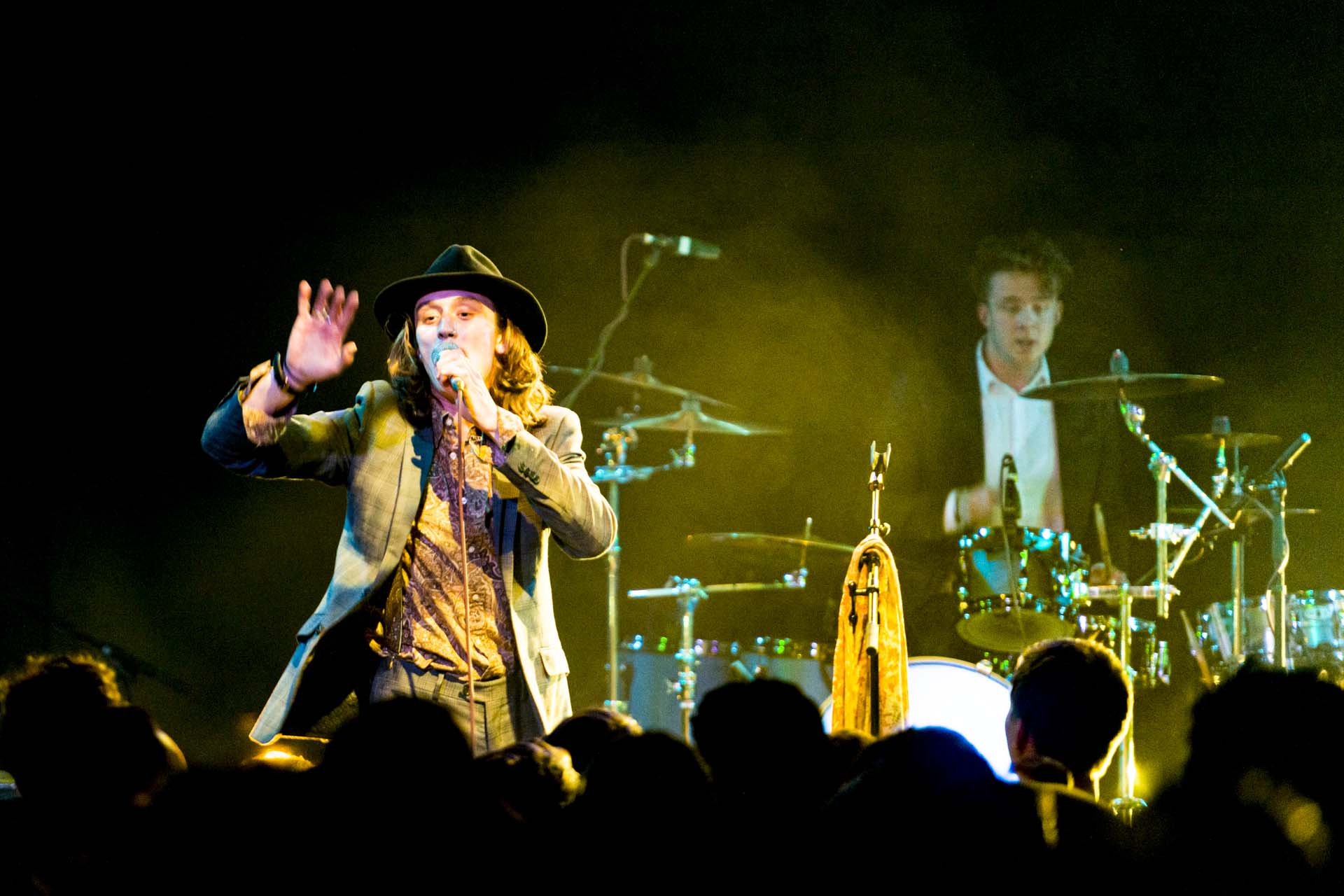Photographing Live Music: Part 3 - Light and Exposure Challenges
Gigs come in all shapes and sizes, and with all styes of music. But from a photographer’s point of view, the biggest variation is in the lighting. How do you expose correctly at a gig? Many people get white, washed-out ghosts on stage instead of the performers they want to see. How do you avoid that, and get professional looking gig images?
The one and only Charlie Winston
Nikon D800 70-200 2.8 @180mm
f3.2 1/100 ISO720 EV-2
The key in all gig photography is that you are going to expose for the face. The one exception is the occasional close up of fingers on fret or keyboard. That aside, whether there is daylight, poor indoor lighting or full stage lighting, the key for exposure will be the face.
Very often there is going to be a lot of contrast in the shot, with a dark background due either to black backdrops or spot lighting or both. To get the face exposure right, you will need to move away from a typical “weighted average” exposure. This can be done with spot metering – putting the spot on the face – or (as I generally do it) by exposure compensation. Often I am shooting at -2 EV or lower. I generally find that the EV approach gives me the most flexibility as I frame the shot. (In the notes that follow, please note that I usually shoot at EV-0.33 even in very flat light.)
Photographing Live Music: Daylight Settings
Much live music happens under daylight. With no special background, a cloudy (and on this occasion, a cold) day, exposure is no issue – any camera on a basic average setting will do a good job. Charlotte Campbell is a fine busker, still working the South Bank and other London haunts a decade after I first saw her at the London Eye.
Nikon D700 50mm 1.4 G
f1.4 1/60 ISO 320 EV-0.33
Larger gigs in daylight may be covered to keep off rain and direct sun. This shot of Sir Simon Rattle with the LSO in Trafalgar Square was an easy one for my Lumix FZ1000.
Lumix FZ1000 146mm (432mm 35mm equivalent)
f4 1/640 ISO125 EV -0.33
At Festivals and other events, there may be some stage lighting even during the day – but the daylight is doing most of the work. The Mentulls at Linton Music Festival.
Lumix FZ1000 26.5mm (79mm 35mm equivalent)
f4 1/160 ISO125 EV -1.33
Once you have a black backdrop, though, you will need to watch for exposure issues, even in daylight, especially when the singer is isolated from other band members who would otherwise help to balance the light spread. This starts to kick in with the shot of the Mentulls above, and this pic of Pat McManus at Linton goes further. Notice the low EV factor in the stats below – lots of compensation needed. Notice too the focus on his hands – he has fast hammer-ons!
Nikon D800 70-200 f2.8 @ 200mm
f3.5 1/400 EV -1.67 ISO110
Martin Turner of Wishbone Ash at Linton. The light is mainly daylight, but the voluminous black background gave me an Exposure Value of -1.33, even with Micha Nikolic filling part of the frame at the back.
Nikon D800 70-200mm @ 190mm
f3.5 1/400 ISO400 EV -1.33
Photographing Live Music: Bright, stage floodlighting
Bright lighting of the entire stage area can approximate to daylight so far as exposure compensation is concerned (though not absolute brightness) – provided that brightly lit performers dominate your frame. This shot of the New York Staff Band of the Salvation Army is more or less straight out of the camera, and with very little exposure compensation needed.
Nikon D800 70-200 f2.8 @ 200mm
f2.8 1/400 EV -.33 ISO720
Photographing Live Music: Classic stage lighting - spots
Shooting gigs with traditional stage lighting is far easier than people think. The combination of bright light on the faces of your subjects and deep shadows behind often allows relatively fast shutter speeds even at low ISO settings – ideal for good sharp images. This assumes, again, that we are going to expose for the faces – and forget the shadows. Just let the shadows fade into blackness, and your job is done.
Photographing Live Music: "Domestic" indoor lighting
It is surprisingly common to be at a small gig with very basic lighting – possibly just the bulbs or strips of a domestic setting. Sometimes, in order to inject a sense of “occasion” (or to help prod people into dancing!) the lights are lowered simply by putting a bunch of them out. The results, from a photographic point of view are rarely pretty. It can feel like shooting in a dull brown soup.
As ever, expose for the face, ensure as much sharpness as you can (letting the ISO rise if need be – noise is better than gross movement blur) and try to inject some drama by 1) good angles while shooting and 2) doing as good a job in post as you can. Editing gig images is for another blog, though.
Photographing Live Music: Single wavelength LEDs
LED lighting set ups have made relatively powerful spot sets far more economical and within the reach of smaller venues. However, unless some thought has gone into the provision of RGBW or RGBWAU strips offering a wider range of wavelengths, single wavelength spot lights can be really painful for the photographer – perhaps especially so in the digital age. A spot that apears to be doing a reasonable job to the naked eye can create a painfully blown out face or vast washes of colour in the camera. Worse happens in editing, where movements of the colour sliders do little, or have very weird effects.
The answer (aside from avoiding such gigs) is 1) expose for the face! 2) use a lens hood 3) position yourself where as little light as possible comes straight from the spot onto your lens. And hope for the best on the edit – black and white may be the only way out.
Photographing Live Music: When it all comes together
The Dimple Discs gig, where I was shooting my friend Nick Haeffner, was pretty depressing on the lighting front. So I am closing with a few shots where I really enjoyed the lighting, and where it enhanced both the audience’s enjoyment on the night, and the quality of photos that could be achieved.
For a round up of my musical photography, please see my main web page here. To contact me to enquire about photography for your band or event, please use my Contact Form or just text (07983 787889) or email me at Andrew@AndrewKingPhotography.co.uk
Photos © copyright Andrew King Photography

